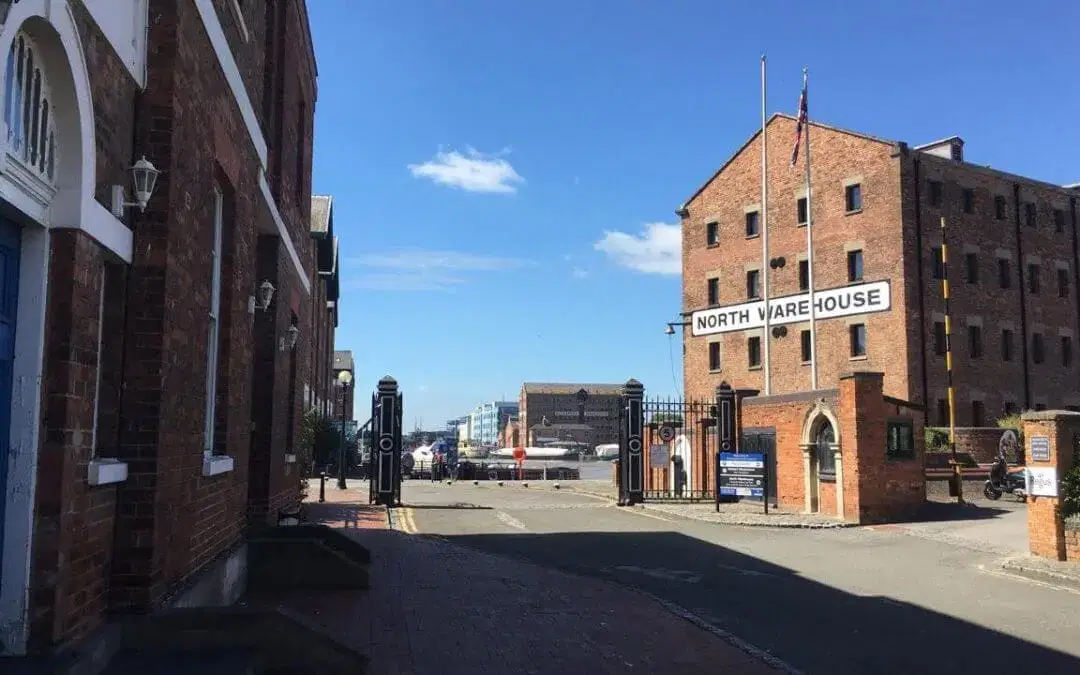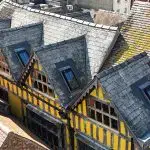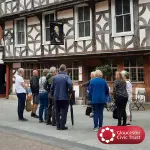1. Gloucester was once a spa
Mineral springs were discovered in Gloucester 1814 and the Gloucester Spa Company was duly formed to capitalise on the fashion for taking to the waters. The Spa Pump Room was built in 1815 and the water was declared to be full of health-giving properties.
The land around the spa was laid out with walks and attracted so many visitors that several hotels were built nearby, as well as a number of elegant Georgian houses.
Brunswick Square, Brunswick Road and Spa Road became very fashionable places to live up until the Railway was built to join the docks with the main line, filling the air with smoke and soot. Soon all the visitors left and by 1860 the Spa building was offered to the Council. The elegant building with its veranda and parapet fell into disrepair and was eventually demolished in 1960.
2. Hat manufacturing was big business
Following the dissolution of the monasteries (1536-41), Thomas Bell and his wife Joan purchased Blackfriars priory for £240. The church was transformed into a private house and the rest of the Monastery into a cap factory, employing over 300 people. Income from the cap trade made Bell the wealthiest citizen of Gloucester – helped by a decree issued by Queen Elizabeth I that everyone who attended church must wear a hat.
Blackfriars is now one of the most complete surviving Dominican friaries in England. It now hosts one of the largest history festivals in the UK.
3. Gloucester made toys that travelled the world
Roberts Brothers made toys and games from the 1890s in the Glevum Works on Upton Street. The range of their products was immense, and they were exported across the world. The most common items were games, with ludo, snakes and ladders and dominoes amongst their greatest production. They also made dolls and soft toys and patented what was the first version of a game which became known as Subbuteo. They were taken over by Chad Valley, and then closed down in 1956.
4. Gloucester was home to a real-life Ebenezer Scrooge
An 1828 painting of the bank by J.R. Orton after a print by George Rowe of Cheltenham. The figure in the doorway is almost certainly intended to be Jemmy Wood. In the collection of Gloucester City Museum & Art Gallery, via Wikimedia Commons
Jemmy Wood inherited the Gloucester City Old Bank in 1802 and ran it from the corner of a draper’s shop in a medieval building in Westgate Street. Set up by Jemmy’s grandfather in 1716, it was said to be one of the oldest private banks in Britain. Jemmy is reputed to be the basis of Charles Dickens’ fictional character Ebenezer Scrooge, as he was a miser and once thought to be the wealthiest man in England, leaving £900,000 when he died in 1836.
5. Gloucester has the most inland port in Britain
Fifteen Victorian Warehouses surround the Gloucester Docks and were once filled with vast quantities of wheat, oats, barley and maize from Ireland, Northern Europe, the Mediterranean and the Black Sea.
Tall ships were able to sail via the Gloucester and Berkeley Canal, bringing goods from all around the world. They were then filled up again with exports, like salt from Stoke Prior and Droitwich, and taken to Ireland and the Continent.
Now the area around the river and canal is filled with moorings for small and large sailing ships and many canal boats. The docks, once a busy port for goods, have been regenerated for leisure activities, with restaurants and shops and are a big draw for tourists, especially when the Tall Ships Festival takes place. Thousands flock to this historic port to see and explore all the Tall Ships on show as well as watch exciting water-based entertainment. It is still an important part of the city of Gloucester but features different sorts of industry and trade.
6. Gloucester was the first place to have Cable TV in the UK – back in 1950
Suspended during World War II, the BBC service was re-established in June 1946, and had only one transmitter, at Alexandra Palace, which served the London area. From the end of 1949, new transmitters were steadily opened to serve other major conurbations, and then smaller areas of population. The areas on the fringes of the transmitter coverage provided an opportunity for Rediffusion and other commercial companies to expand cable systems to enlarge the viewing audience for the one BBC television channel which then existed. The first was in Gloucester in 1950.
7. Humpty Dumpty came from Gloucester
Humpty Dumpty was said to be the name of an unprecedentedly large mortar imported from Holland. It was mounted on the walls of Llanthony Secunda Priory where the Royalist forces were encamped during the Siege of Gloucester. It was apparently named (disparagingly) after a famously rotund MP of the day. As the artillerymen trained their sights on Gloucester’s cathedral, the cannon misfired and fell off the wall.








